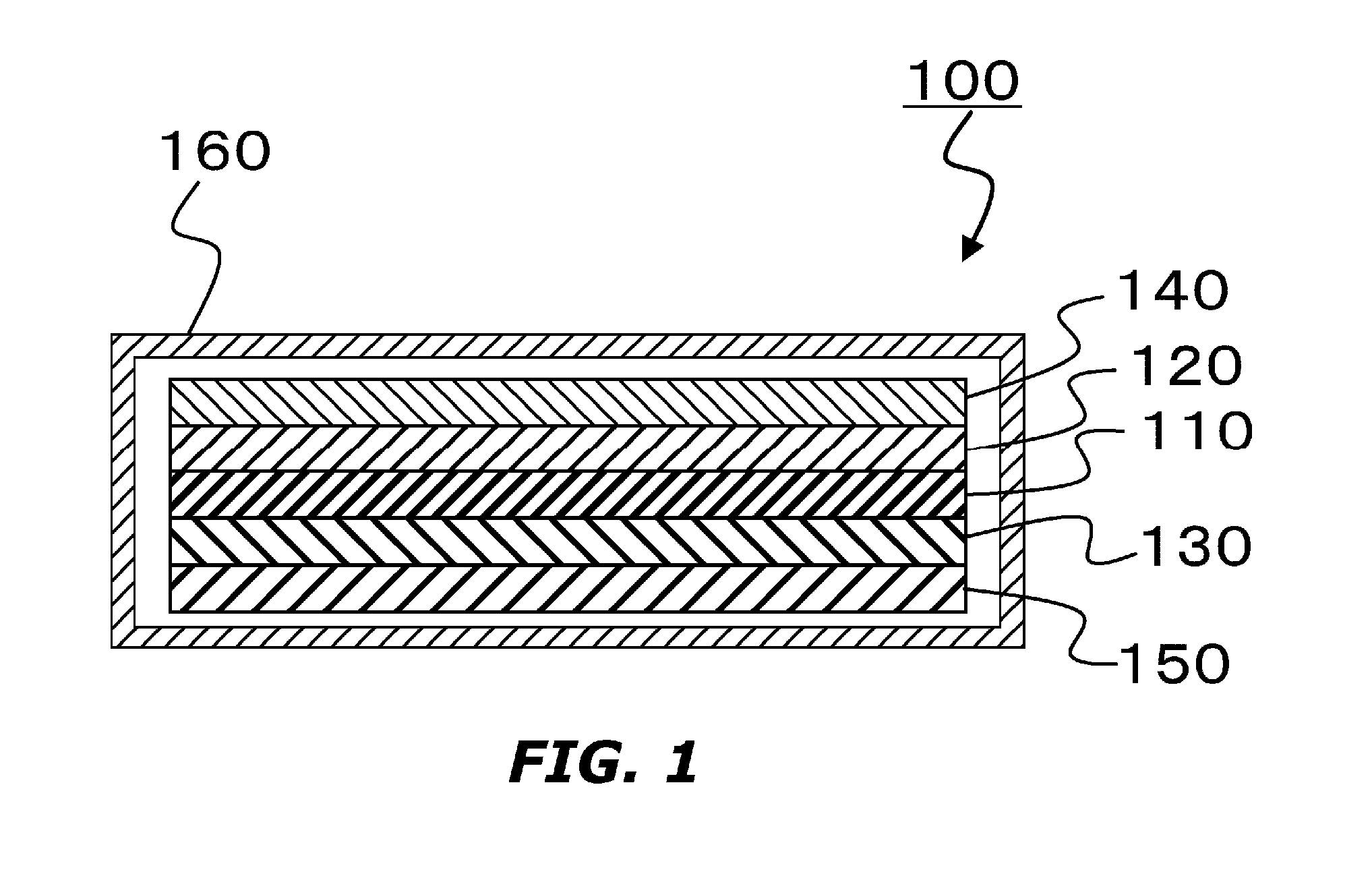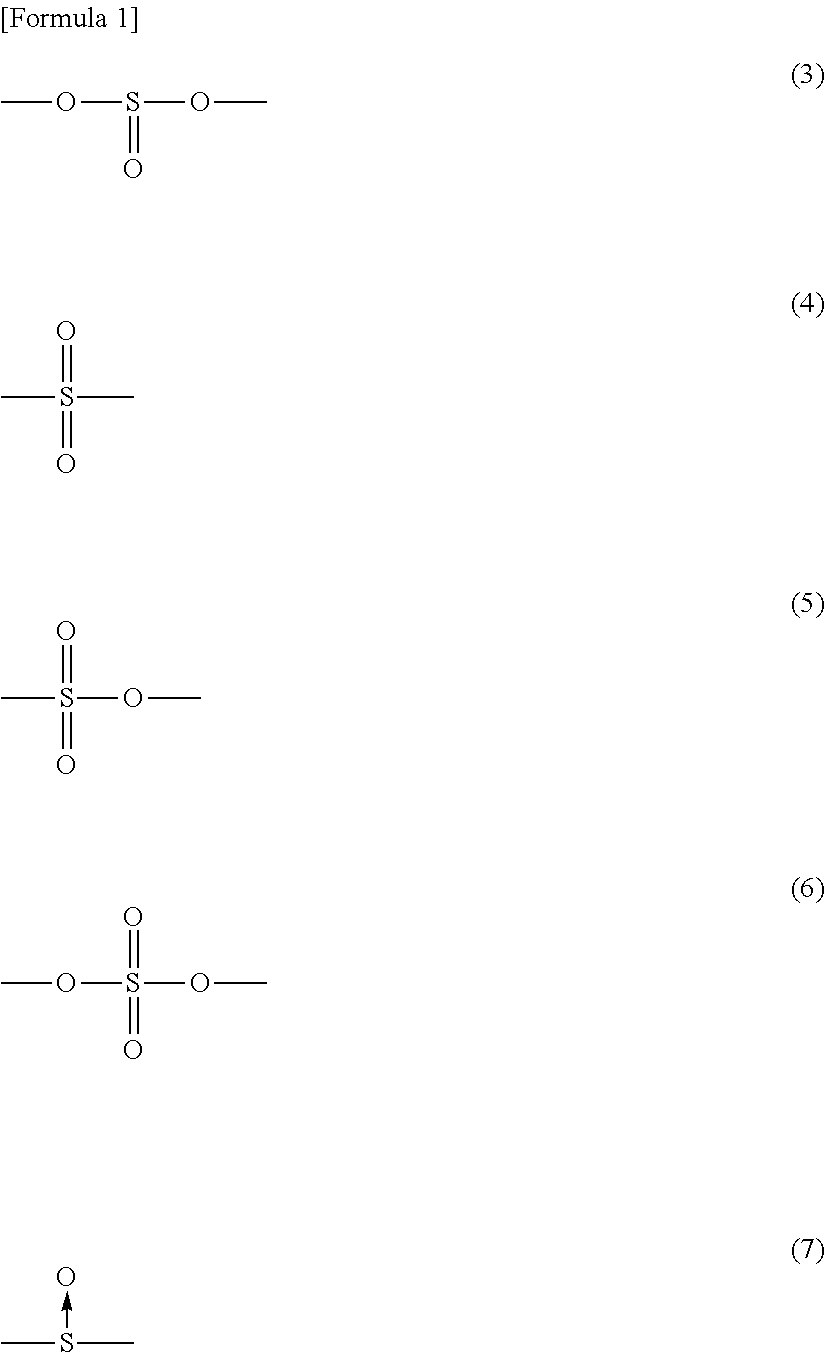Non-Aqueous Electrolyte Solution and Non-Aqueous Secondary Battery
a secondary battery and non-aqueous electrolyte technology, applied in the direction of secondary cell servicing/maintenance, sustainable manufacturing/processing, final product manufacturing, etc., can solve the problems of nitrile group serious disadvantage in electrochemical reductive decomposition, the non-aqueous secondary battery must work, and the low-temperature properties of the electrolyte used. achieve the effect of high-rate performan
- Summary
- Abstract
- Description
- Claims
- Application Information
AI Technical Summary
Benefits of technology
Problems solved by technology
Method used
Image
Examples
example 1
Preparation of Electrolyte Solution
[0144]Using the electrolyte solution (S1) shown in Table 3, a monolayer laminate type battery (SL1) was produced. Then, the measurement described in (1-1) above was carried out on the battery. The results are shown in Table 6.
example 2
[0146]Using the electrolyte solution (S3) shown in Table 3, a monolayer laminate type battery (SL1) was produced. Then, the measurement described in (1-1) above was carried out on the battery. The results are shown in Table 6.
example 3
[0147]Using the electrolyte solution (S4) shown in Table 3, a monolayer laminate type battery (SL1) was produced. Then, the measurement described in (1-1) above was carried out on the battery. The results are shown in Table 6.
PUM
| Property | Measurement | Unit |
|---|---|---|
| charge | aaaaa | aaaaa |
| LUMO | aaaaa | aaaaa |
| unoccupied molecular orbital) energy | aaaaa | aaaaa |
Abstract
Description
Claims
Application Information
 Login to View More
Login to View More - R&D
- Intellectual Property
- Life Sciences
- Materials
- Tech Scout
- Unparalleled Data Quality
- Higher Quality Content
- 60% Fewer Hallucinations
Browse by: Latest US Patents, China's latest patents, Technical Efficacy Thesaurus, Application Domain, Technology Topic, Popular Technical Reports.
© 2025 PatSnap. All rights reserved.Legal|Privacy policy|Modern Slavery Act Transparency Statement|Sitemap|About US| Contact US: help@patsnap.com



